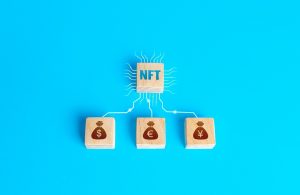The disruptive nature of cryptocurrency technology results in continuous efforts to create similar projects or those slightly different from the original one while employing the same model. Meanwhile, there is always a significant development in the crypto space that receives enormous publicity. One of those significant developments is the creation of non-fungible tokens.
Non-fungible tokens (NFTs) are becoming widely accepted and spreading across industries that adopt cryptocurrency for transactional purposes or leveraging blockchain technology to enhance transparency while acquiring some assets.
This guide examines the definition of NFTs and how you can determine an NFT price while measuring its intrinsic value.
Definition of a Non-Fungible Token (NFT)
A non-fungible token is a digital representation of physically valuable items by awarding the owner a unique code to claim possession. They can represent arts, collectibles, real estate, or other assets.
NFTs are tokens purchased on a decentralized platform known as the blockchain network. Their hosting depends on the creator’s choice of the blockchain platform and gives the creator total control over price and who to sell. Non-fungible is a term used in economic settings referring to materials that are not swappable for the other due to their unique properties.
Meanwhile, fungibles items are interchangeable because they depend on valuation based on economic capacity instead of unique properties, as with NFTs. Examples of things that are tokenized into NFTs are tweets, a song file, an image, digital sketch, to mention a few. Purchasing an NFT makes you the original owner, and such a piece is not available elsewhere on the internet because of the unique digital code attached to it.
3 Factors Determining NFT’s Value
It is almost impossible to determine an NFT value because it is a relatively new concept in the cryptocurrency space. On the other hand, you can determine the worth of fungible objects like artworks by any artist. This gives investors or potential buyers hard times deciding the price of NFTs.

Despite the uncertainty of value evaluation, NFTs’ adoption is happening across different industries, and their valuation increases. As a result, there are three concurrent factors used in determining NFT price.
- Sustainability
The real-world objects that an NFT is tethered to determine the value of such NFT. This also depends on the level of security the owner is willing to provide over the token. You can support any material with NFT to reinforce that you own, but you can’t make it unique or in-demand because of that. NFT price will depend on how valuable the object is, how available it is, and the satisfaction an owner derives from owning it.
An instance is buying an NFT ticket to a movie premiere where you sit alongside top business owners from around the world. This is considered a worthy investment than purchasing an NFT tethered to a shirt.
Although its usability explains that you can only hold the NFT ticket for a short time because it may expire like actual tickets. On the other hand, NFT tethered to objects like designers may accumulate more value over a long period depending on item circulation.
- Scarcity
This feature factors in the difficulty buyers or investors face in getting such NFT. These NFTs are regarded as specific NFTs because the intricate potency of such NFTs drives the NFT values. An example is a tweet by Jack (Twitter CEO) that was tokenized and sold for an equivalent of $2.9 million. Another factor is the NFT’s usefulness in a real-life event. An instance is a unique card that you can use to unlock some treasures in a video game.
It is essential to know that people are attracted to the inbuilt value of an NFT. That holds an explanation for proving its blockchain ownership and hosting platform. As a result, buyers can determine an NFT price based on its uniqueness and premium values.
- Usefulness
The usefulness of an NFT depends on how it is applicable in the real world. It can either be relevant physically or in the digital world. Examples are some collectibles you can purchase in video games. This presents them with values that can accumulate over time based on how popular the implicit project is.
The video game community is experiencing an increase in the exchange of dollars to purchase unique cards created as NFTs. An example is the Euro 2020 NFT Ticket.
Conclusion
The emergence of NFTs in the cryptocurrency space is becoming a necessary diversion. NFTs are now rewarding creators for their creative efforts. Aside from giving them absolute control over pricing and who to sell to, it helps eliminate a third party that may benefit more than them in a single NFT transaction. An instance is the elimination of an auction body.
However, determining an NFT price remains tricky in the cryptocurrency space because of investors’ perspectives on how genuine a digital asset is worth their money. Meanwhile, the increasing adoption of NFTs across industries makes it not difficult to determine NFT prices with time.



